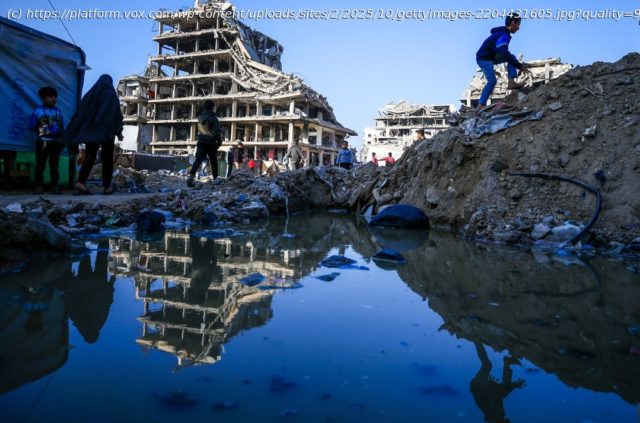It’s worth celebrating. But there’s reason to fear what it portends.
At last, Israel and Hamas have reached a deal — of a sort. On Wednesday evening, President Donald Trump announced that the warring parties in Gaza agreed to implement the “first phase” of the peace plan he presented in September. While this doesn’t quite mean the war is completely finished just yet, it appears to be an earnest attempt by Israel and Hamas to begin ending two years of bloody conflict, destruction, and despair.
Over two years of war — launched after Hamas invaded Israel and killed around 1,200 people, most of them civilians, and took around 250 more as hostages back to Gaza on October 7, 2023 — Israel has annihilated the Gaza Strip. It has killed more than 67,000 Palestinians, starved and displaced most of Gaza’s 2 million residents, and reduced most of the territory’s buildings and infrastructure to rubble.
The fate of the hostages has also wrenched Israel’s population, driving many of its citizens to join massive protests demanding a deal to end the war and return those kidnapped for more than a year. Globally, Israel’s conduct has left its reputation in tatters, its leaders charged with war crimes by the International Criminal Court and isolated on the world stage by nearly all but its closest ally, the United States. The war, and its unpopularity abroad, led Israel’s former allies Australia, Belgium, Britain, Canada, France, and Portugal to recognize Palestinian statehood at last month’s UN General Assembly.
Now we’ll find out if the peace can hold, and if so, what the “day after” actually looks like. Wednesday’s deal means, the parties say, that all Israeli hostages who are still being held in Gaza will be returned, beginning with those still living, estimated to be around 20 people, as soon as Monday; the remains of the dead Israeli hostages (approximately 30) will reportedly be returned in phases afterward. In exchange Israel will release nearly 2,000 Palestinian prisoners, approximately 1,700 of whom were captured during the current conflict. Israel also says its army will retreat to an agreed upon line in Gaza as the first part of its withdrawal from the territory.
But most importantly, much is still unknown about the terms of the agreement that Israel and Hamas have reached. We don’t know whether Hamas has agreed to completely disarm. We also don’t know the extent to which Israeli troops are withdrawing from Gaza, or the timing of that withdrawal. Israeli Prime Minister Benjamin Netanyahu’s cabinet is meeting Thursday to vote on accepting the deal, and the ceasefire has not yet begun; Israeli strikes on the Strip were reported even as celebrations unfolded across both Gaza and Israel.
This is not a deal that Netanyahu’s government would have agreed to on its own. Indeed, he reportedly had to be strong-armed pretty aggressively by Trump into agreeing to it.
And yet, it’s about as close to an absolute victory for Israel as was conceivable over the past two years. If the deal actually being implemented resembles at all what was first announced by Trump at the beginning of the month, Israel will keep a troop presence in Gaza and the capability to periodically launch future strikes against militants there.






